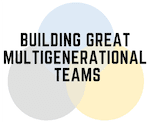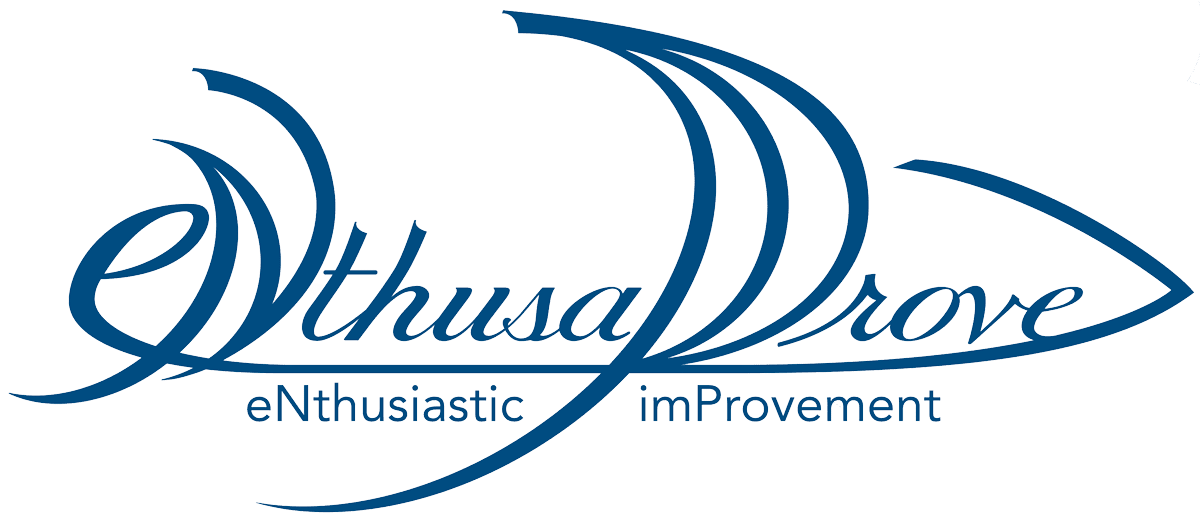 The Workplace has changed. The Marketplace has changed. Leadership needs to change.
The Workplace has changed. The Marketplace has changed. Leadership needs to change.
We now have five generations in the workforce, with more age diversity than ever before! Multigenerational Teams are seeing that the dynamics of how to work together are changing.
You have the Silent Generation and Baby Boomers, affected by the Great Recession, working longer. Gen Z (iGen, or Centennials) entering the workforce will significantly change the economy in the next 5-10 years, causing many businesses to become irrelevant.
Millennials are rising to leadership roles and are the single biggest population in the workforce. Gen X is quietly holding and acquiring most of the executive roles.
The layout of a project team today is diverse, including many, if not all, these generations. Though there is this natural rise up the hierarchy with age, it doesn’t mean that ALL members of these generations move up that way. With these differing viewpoints, how can a team come together? Building Trust. The speed and technology environment changes require more effective teams that navigate emerging trends and adjust quickly.
What’s it like to work on a team today? We are not tethered to a desk, computer, and landline phones (what’s that?!?!). We are mobile. Our teams work at conference tables, open concept desks, coffee shops, and at home. The pace of work continues to increase as the pace of life speeds up. People are living longer and working longer.
As our society is more mobile, the pace of work is faster, and our workforce more diverse in age, how does that effect the relationships on our teams?
The fast pace of technology development is shifting the knowledge needed to be relevant in the high-tech world. The younger generations easily embrace these new technologies because they are just the way life is…it’s not change for them. That puts the older generations at a skills disadvantage, and the younger workers teach the older how to Snapchat, use slack, and how to tweet. We’ve seen that these technology behaviors are rippling UP generations as never before.
That’s usually where the conversation ends in many online articles, but we know that’s not the whole story. There’s a reason that it takes time before many of us make it to executive leadership.
What do people develop in careers that gets them closer to higher levels of leadership?
How to get things done, influence others, build a network, build a team, etc…. these are the things that are rippling DOWN to the younger generations.
I love Chip Conley’s description of this. “I started to realize that there are some things they could teach me, like digital intelligence, and there are things that I could teach them, which is emotional intelligence, leadership skills, strategic thinking, etc. That is the opportunity. How do we create an intergenerational collaboration like we’ve never seen before because we have five generations in the workplace at the same time, for the first time?”
When you work on a team, it’s because the task requires ALL OF US. (Otherwise, we would do the work independently, right?!?!). That’s because we all have value to provide. I like Chip’s description of it as an “intergenerational potluck – where everyone brings something to the table.” (Wisdom at Work: The Making of a Modern Elder, Chip Conley, AirBnB)
It isn’t an automatic response to have a happy joyful potluck at your first team meeting. There will be people holding back their dish, intentionally hiding dishes behind others (or behind a bush), or carrying it while eating off other’s plates. (Maybe I’ve taken this metaphor too far.) Anyway, you see, there’s something we have to do first (and reinforce throughout) in order to join in sharing and learning from each other. Build trust.
Building Trust Across Generations
Trust is “the firm belief in the reliability, truth, ability, or strength of someone or something.” There’s weight and permanence embedded in the meaning of the word. When we trust someone or something, we believe that they will be there…we can bank on it.
Why is this necessary for a team? Well, it’s not. It is necessary for a team that is going to be great. That succeeds consistently. That delivers. There’s lots of teams out there that survive and do the work. These are the teams that go through the motions and are good at maintaining the status quo. Sometimes these teams even manage the status quo to the demise of their company.
Does your team need to change the culture? Do something different? Make something new? Apply new technology in a novel way? Then your team must have a level of firm confidence in each other. Otherwise, you’ll see micro-managing, drama, aloof teammates, etc.
Each generation is unique AND has common ground. The common ground is where we can plant firm to develop trust. Then the uniqueness of our skills and value can shine within that.
How to build a great multigenerational team
In order to set a firm foundation of trust where a team can thrive, we have to have the trust that my teammates and leadership are worthy of trust. It’s only then that I will put myself out there and let you try the dish I brought to the potluck.
To build a team that will trust, there are three things that are needed.
- Connect to the Mission and to Each Other
- Create Value
- Contribute it to the Greater Good
These three elements give us the basics to develop a team that trusts and can find consistent success. Let’s dig into these a bit deeper.
Connect
TO THE MISSION. Each generation has values and perspectives of what is valuable. For an engaged team, the mission must be worthwhile and valuable (to each team member). Each teammate is going to find unique perspectives on why it is valuable, which is likely to be formed by their generational perspective.
TEST: Do you hear things like… ”What are we here for?” “What’s the point?” Take a look into bolstering your connections to the mission.
TO EACH OTHER. We’ve heard many times over how the generations view technology and communication very differently. This is true AND is the biggest factor in predicting success for those teams that are innovating, inventing, changing culture or processes. Google’s Project Aristotle researched the factors for success and psychological safety was the biggest indicator of team success (on-time, on-budget). Amy Edmondson from the Harvard Business School defines it as “Psychological safety is a shared belief held by members of a team that the team is safe for interpersonal risk-taking.”
TEST: What does it look like when connections to teammates aren’t there? These are thoughts like… ”Are they going to shoot me down?” “Last time I offered an idea it was discredited.” “Every time I say something, Gina gives me an eye roll.”
Create
When we see the value in the project and we have a team where we are building connections, the next step is to do something. This is where each person’s skills, knowledge, and talents come into play for the team, creating the value that the team needs to do the work.
TEST: If your team is seeing a lack of ideas and innovation is dwindling, there is likely something in the way of creating value for the team.
Contribute
This is where you find out if you’ve done the other parts well because contributing the value to the greater good builds on the connection and creative value creation. This is where contributions need to see the light of day to get the feeling of success and a job well done.
TEST: If your team is experiencing roadblocks and red tape blocking their creations, you are likely to see disappointment, disengagement, and an overall “just tell me what to do” sentiment.
Want a Guide to Help?
Building connections, creating value, and contributing that value takes time and addressing the barriers head-on. I have spent my career working with engineers and scientists to make life better. As much as I appreciate the technical aspects of engineering and project management, I’ve found that building effective teams is the biggest hinge of success and failure in a project.
 I want to help your team be successful. I’ve put together perspectives and ideas to work on each of these elements (or whichever one seems to be dogging your team) in my online course, Building Great Multigenerational Teams. I have simplified the generations into early, mid, and late-career divisions because that made the most sense from the trends I saw in my research with engineers and scientists.
I want to help your team be successful. I’ve put together perspectives and ideas to work on each of these elements (or whichever one seems to be dogging your team) in my online course, Building Great Multigenerational Teams. I have simplified the generations into early, mid, and late-career divisions because that made the most sense from the trends I saw in my research with engineers and scientists.
For each career phase, I strive to show you how that phase wants to connect, how they can provide amazing value, and how they can be encouraged… so that’s 12 areas of ideas to build and engage your team. Also, there are two team-building exercises to build team trust and better communication and discussion questions for your team in each section.
Check out my free email course.
You don’t have to come up with all the ideas to help your team be the kind of team that succeeds. I’ve fallen into those never-ending google sessions where you look up hours later wondering what you learned from all the articles and TED videos…. Avoid that time-warp and take the shortcut I’ve put together for you. Put your time toward creating a great team that succeeds and wants to work together again when it’s all over!
[convertkit form=853174]





